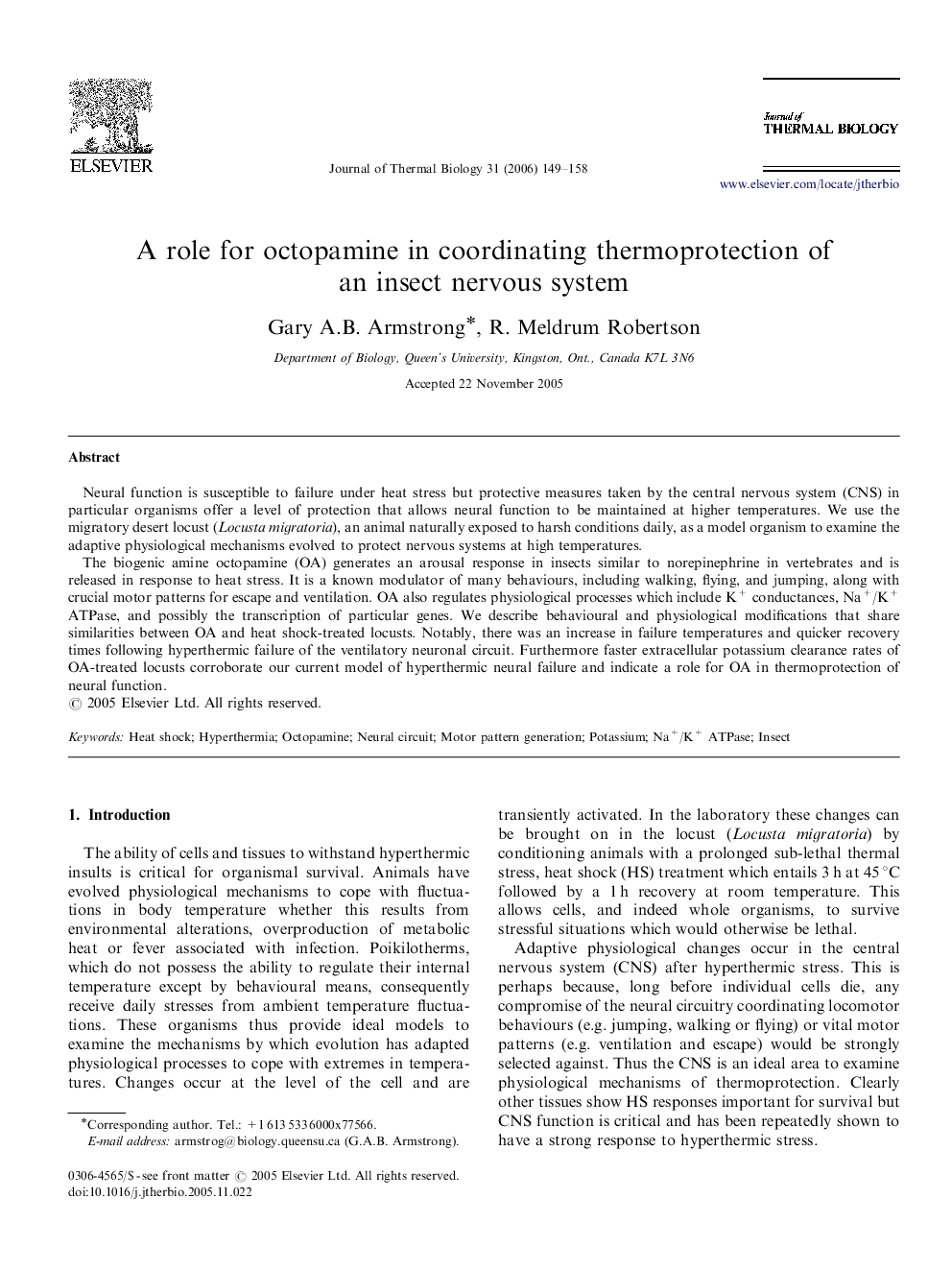| Article ID | Journal | Published Year | Pages | File Type |
|---|---|---|---|---|
| 2843774 | Journal of Thermal Biology | 2006 | 10 Pages |
Neural function is susceptible to failure under heat stress but protective measures taken by the central nervous system (CNS) in particular organisms offer a level of protection that allows neural function to be maintained at higher temperatures. We use the migratory desert locust (Locusta migratoria), an animal naturally exposed to harsh conditions daily, as a model organism to examine the adaptive physiological mechanisms evolved to protect nervous systems at high temperatures.The biogenic amine octopamine (OA) generates an arousal response in insects similar to norepinephrine in vertebrates and is released in response to heat stress. It is a known modulator of many behaviours, including walking, flying, and jumping, along with crucial motor patterns for escape and ventilation. OA also regulates physiological processes which include K+ conductances, Na+/K+ ATPase, and possibly the transcription of particular genes. We describe behavioural and physiological modifications that share similarities between OA and heat shock-treated locusts. Notably, there was an increase in failure temperatures and quicker recovery times following hyperthermic failure of the ventilatory neuronal circuit. Furthermore faster extracellular potassium clearance rates of OA-treated locusts corroborate our current model of hyperthermic neural failure and indicate a role for OA in thermoprotection of neural function.
